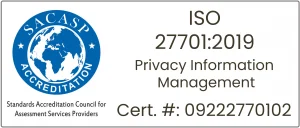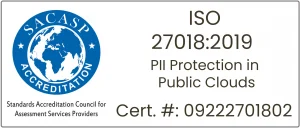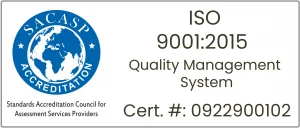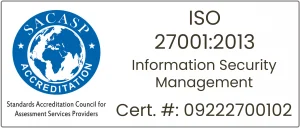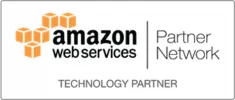As cross-border payments become more common, businesses must sort, manage, interpret, process, and check ever-increasing volumes of complex data. The involvement of multiple intermediaries, jurisdictions, regulations, and time zones in completing a transaction slows down the transaction process and makes the remittance business a bit complicated.
When the currencies involved are less common, enabling, recording, and resolving payments can become more expensive. The addition of ‘correspondent’ or intermediary banks increases the number of links in the transaction chain, while the transaction process can be slowed due to differences in regulations and security requirements per country or region.
G20 Roadmap for enhancing cross-border payments
G20 Intergovernmental forum is thriving to reduce friction in cross-border payments as it is one of the vital requirements in the international remittance industry. The G20 recognises the benefits of a more seamless, connected, and coherent global financial environment that will address the challenges and pain points around cross-border payments.
It recommends that businesses must adapt quickly to ensure the smooth and secure flow of data and payments around the world. The G20 emphasises limitations with legacy platforms as a key area, as these can cause data processing slowdowns, resulting in negative consequences such as delayed settlements and liquidity issues.
In short, businesses are expected to deal with larger and more complex datasets faster, without sacrificing accuracy or increasing corporate risk. Failure to deal with the increasing complexity and scale of cross-border payments can have ramifications for costs, productivity, and even brand reputation.
As a result, businesses must think about new ways of working in the coming years that minimize risk, expedite operations, and maximise efficiency.
Reconciliation is the smart way to step ahead
Every payment transaction must be reconciled as soon as possible, just like in any financial organisation with multiple parties, to ensure smooth operations, and compliance, spot fraud risks, and uphold the standard of service for our clients and partners.
Reconciliation is typically a manual process carried out by the back-office staff of SMEs. When there are few parties involved, this strategy is still effective. However, how do you manage reconciliation when you have millions of transactions, hundreds of partners, and various payment methods, transaction formats, and data points?
Increasing resilience and speeding up cross-border payments processes
Cross-border payments are the driving force behind international commerce. However, as with all domestic payments, they must be subject to stringent checks and balances. Businesses have two options in the face of this growing scale and complexity: continue to work in a labour-intensive, manual manner, or rely on outdated systems that may fail when handling more extensive and delicate data. Alternatively, they can invest in automation systems that will assist them in adapting, reducing costs, and remaining agile to stay competitive in the new environment.
Automatic reconciliation of payments data
A significant area for improvement in cross-border payments is automatic reconciliation. Businesses can avoid the delays caused by mismatched data, fraud worries, and accounting hold-ups by automating the cross-border payment verification process. Human error is eliminated by automation, freeing up your staff to focus on tasks that add value.
Automated reconciliation of payments data ensures the streamlining of cross-border payments at a fast pace by reducing the complexity and ensuring smooth internal operations. Automatic reconciliation ensures the intermediaries are coordinated quickly irrespective of the number of transactions processed at the same time.
Automation makes it simple to spot data anomalies, problems, or irregularities. Reports are then generated for the appropriate person to act on, enabling more rapid decision-making and problem-solving. It gives businesses more control over their data, resulting in safer management and an improved real-time picture of customer or company finances.
A Multi-acquirer reconciliation approach for payments orchestration
To accept cross-border payments efficiently, a multi-acquirer setup should be in place to connect multiple payment service providers (PSPs). This allows them to provide the appropriate payment methods for the jurisdiction in which they operate, as well as benefit from lower processing fees because of geographical location and other determining factors. While this has advantages, it is not without logistical challenges.
With a lack of accurate reconciliation and settlement data across all their PSPs, it is unable to effectively monitor the remittance lifecycle. This is a frequent complaint that can occur when connections are made separately and do not interact. No matter how many PSPs or even different currencies, such as fiat or cryptocurrency, are involved, merchants can monitor the entire activity from a single dashboard by connecting to payment gateways using just one API.
The data is gathered and presented uniformly by a payment infrastructure that permits a consolidated multi-acquirer setup, such as a payment orchestration platform. This is made possible by the fact that the payment orchestration platform serves as a technical intermediary between the merchant and the PSPs/acquirers.
Transactions are sorted through the payment orchestration platform and then, based on rules set up by platform users, are routed to the most appropriate processor. Additionally, it implies that the platform stores the payment data, making it possible for the payment orchestration platform to gather the necessary data from the payment processors. An effective cross-border payments application with a BI dashboard can import all the data stored on the platform, making it simple to analyse and share data.
Final thoughts
Although reconciliation may appear simple at first glance, there are many hidden difficulties, particularly in cross-border payments where FX and a lack of API integration can cause complications. These complexities must be methodically addressed by the team in charge of the operational process. Businesses must view reconciliation as a core process in their daily work and not just as an activity that takes place at the end of each month to provide a smooth and efficient service.
Selecting the right third-party solution for cross-border payments also guarantees that the technology is managed by experts, is scalable, and is always current. NetRemit is one such efficient cross-border payment solution that offers an easy-to-use admin centre that enables remittance providers to provide a simple onboarding process, handle customer and transaction data, and manage all remittance operations on a single platform.
Through technological innovations like digital identity validation and Open Banking integration, the modern infrastructure of NetRemit’s data orchestration process enables money to transfer between nations without any interruptions.
Business leaders can make informed decisions by analysing important factors like transaction volume, FX commission, and operational revenue with the help of integration with reporting tools (SSIS for data transformation, and Microsoft Power BI for visualisation).
Businesses can use data mining and extended marketing data analytics to forecast consumer behaviour, enhance all types of decision-making, and calculate the return on investment from their marketing efforts.
We support major banks in the UK to take control of their data, ensuring compliance and control with a high-quality product customised for each client’s requirements. Our collaborative approach guarantees that we are always available to streamline your procedures and offer advice on industry best practices.
If you’re interested in learning more about how we can boost the efficiency of your company’s cross-border payment, pls reach us at salesdesk@macroglobal.co.uk.

